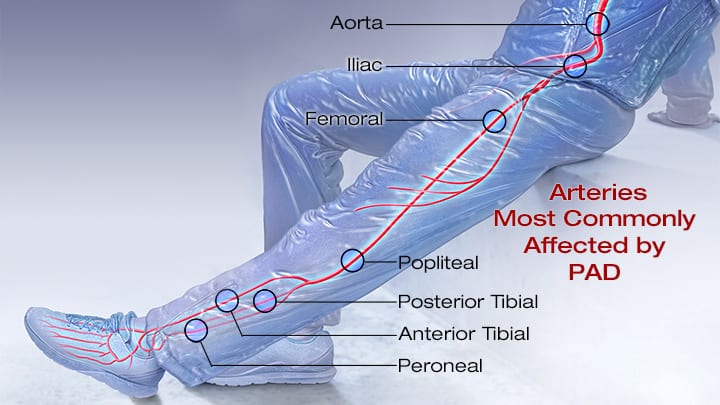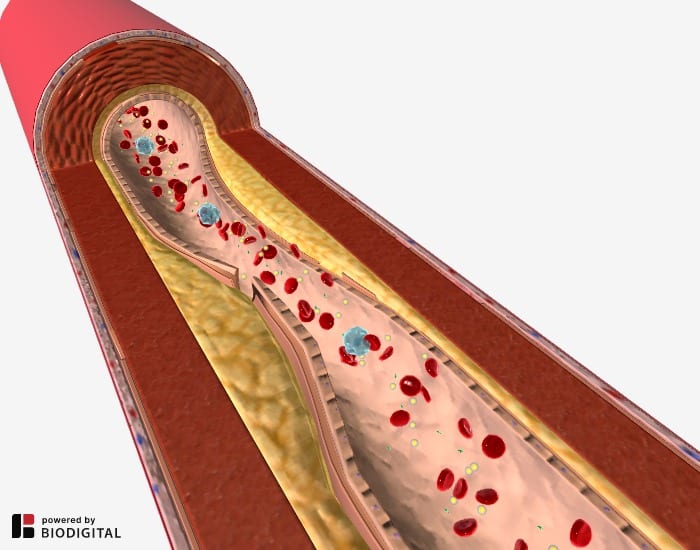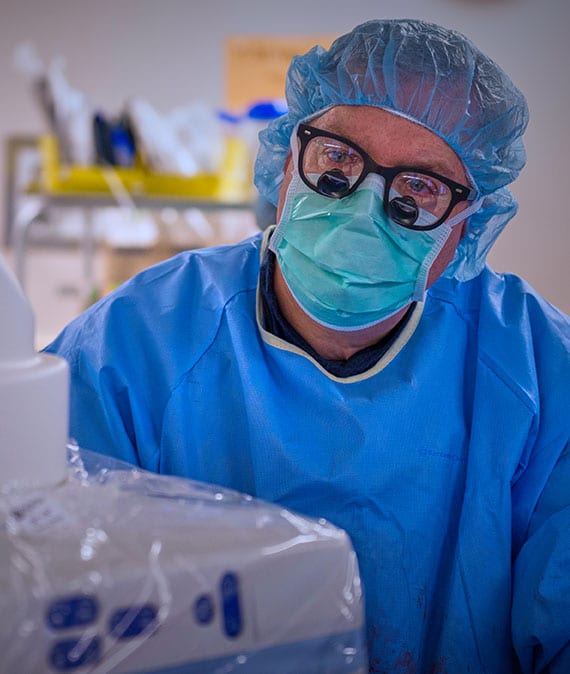A New Solution For
VASCULAR DISEASE
Peripheral Arterial Disease (PAD)
Peripheral Arterial Disease (PAD) affects over 200 million people worldwide. In a study of 125,000 veterans funded by the American Heart Association Strategically Focuses Research Network in Vascular Diseases and the U.S. Department of Veterans Affairs found those with PAD had a 13.9 fold increase in lower limb amputation and suffered 22% of all amputations. People older than 50 have increased risk of developing the disease and by age 65 approximately 12-20% of the U.S. population will have PAD.

Image found on https://watchlearnlive.heart.org/index.php?moduleSelect=periad
Peripheral Arterial Disease (PAD)
Peripheral Arterial Disease (PAD) affects over 200 million people worldwide. In a study of 125,000 veterans funded by the American Heart Association Strategically Focuses Research Network in Vascular Diseases and the U.S. Department of Veterans Affairs found those with PAD had a 13.9 fold increase in lower limb amputation and suffered 22% of all amputations. People older than 50 have increased risk of developing the disease and by age 65 approximately 12-20% of the U.S. population will have PAD.

Image found on https://watchlearnlive.heart.org/index.php?moduleSelect=periad
Other factors increasing the chances of developing PAD include:
Information found on http://www.heart.org
Other factors increasing the chances of developing PAD include:
Information found on http://www.heart.org
Interventional Treatment Options for PAD
The choice of PAD treatment depends on the pattern and extent of blockages in the vessels, as well as other factors such as general health and the presence of other medical conditions. Historically, PAD often was treated in a surgical bypass procedure, which while effective, was very invasive and involved the risk of surgical complications. While a number of endovascular technologies are now available for the treatment of PAD, the need for simple vessel prep and plaque modification to deliver optimized final therapy is desired.
The FLEX Vessel Prep System provides a unique mechanism of action to modify plaque that is easy-to-use, and designed to optimize the final revascularization. Despite the recent availability of multiple new endovascular technologies for the treatment of PAD, angioplasty balloons have remained the most frequently used modality either as primary therapy or adjunctive therapy along with stents and other devices. Current tools for treating PAD are not perfect as each has its own set of limitations and challenges. The FLEX Vessel Prep System provides a unique mechanism of action that is easy to use.
Interventional Treatment Options for PAD
The choice of PAD treatment depends on the pattern and extent of blockages in the vessels, as well as other factors such as general health and the presence of other medical conditions. Historically, PAD often was treated in a surgical bypass procedure, which while effective, was very invasive and involved the risk of surgical complications. While a number of endovascular technologies are now available for the treatment of PAD, the need for simple vessel prep and plaque modification to deliver optimized final therapy is desired.
The FLEX Vessel Prep System provides a unique mechanism of action to modify plaque that is easy-to-use, and designed to optimize the final revascularization. Despite the recent availability of multiple new endovascular technologies for the treatment of PAD, angioplasty balloons have remained the most frequently used modality either as primary therapy or adjunctive therapy along with stents and other devices. Current tools for treating PAD are not perfect as each has its own set of limitations and challenges. The FLEX Vessel Prep System provides a unique mechanism of action that is easy to use.




